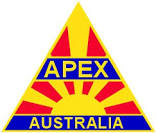Home » All Articles » NOAA Lessons » Upper Air Charts
Category Archives: Upper Air Charts
Long and Short Waves
Long and Short Waves
Long Waves
The hemispheric weather patterns are governed by mid-latitude (23.5°N/S to 66.5°N/S) westerly winds which move in large wavy patterns. Known as planetary waves, these long waves are also called Rossby waves, named after Carl Rossby who discovered them in the 1930’s.

Rossby waves form primarily because of the earth’s geography which does two things. First, the earth’s heating from the sun is uneven due to the different shapes and sizes of the land mass (called differential heating of the earth’s surface). Second, the air can’t travel through a mountain so it must rise up and over or go around.In both cases, the disruption of the air flow creates imbalances in temperature distribution both vertically and horizontally. The wind responds by seeking a return to a “balanced” atmosphere and changes speed and/or direction. However, as long as the sun keeps shinning, those imbalances will continue to develop. Thus the wind will constantly be changing directions, and develop into wave-like patterns.
The length of long waves vary from around 3,700 mi (6,000 km) to 5,000 mi (8,000 km) or more. They generally move very slowly from west to east. But occasionally they will become stationary or retrograde (move east to west).
The speed at which these large waves move should not to be confused with the speed of the wind found within the waves themselves. For example, there can be a strong jet stream wind of 100 kts (115 mph / 185 km/h) moving through the long wave but the position of long wave itself move may very little. The wave itself is not moving at 100 kts, just the wind within.
Rossby waves help to transfer heat from the tropics toward the poles and cold air toward the tropics trying to return the atmosphere to balance. They also help locate the jet stream and mark out the track of surface low pressure systems. The number of long waves at any one time varies from three to seven though it is typically four or five.
Their slow motion often results in fairly long persistent weather patterns. For example, locations between the trough and the downstream ridge can experience extended periods with rain or snow while at the same time 1,500 – 2,000 miles (3,000 – 4,000 km) upwind and/or downwind the weather is very dry.
This often can lead to a misconception where one assumes the weather he or she experiences is typical everywhere. That is simply not true. If one place is receiving cooler weather and/or flooding rains over a period of several days to weeks, then there are some other places where the weather is warm and dry for about the same period. It all depends upon the location of the long waves relative to the observer.
Short Waves
A “piece of energy”, “vort max” (or “vorticity maximum”), “pocket of cold air” (or “pocket of energy”), “upper level disturbance”, “upper level energy”, or just “shortwave” are some of the slang terms for waves with a length of less than 3,700 miles (6,000 km).
They are embedded within the long waves and move much faster and throughthe long waves. Unlike the slow movement of long waves, short waves move east (down stream) on average of 23 mph (20 kts, 37 km/h) in summer and 35 mph (30 kts, 55 km/h) in winter. This motion causes long waves to distort and change shape such as deepening long wave troughs and flattening long wave ridges.
Due to their variety of sizes, it can be difficult to discern short wave embedded within a long wave by looking at a static map. One often needs to see looping images of the wave patterns to determine the difference between them.
Short waves, embedded within long waves, are also the chief instigator of episodes of precipitation. Main precipitation bands will be typically localized near the short wave as it passes overhead.
Below is an example of a 500 mb chart. The height contours are in black. The brown arrows indicate direction of airflow. The large red dashed lines represent the location of the long wave troughs.

The shorter blue dashed lines represent the location of the of the more prominent short waves. (There are more short waves than indicated.) The green areas represent precipitation totals. The areas of precipitation are mainly associated with the short waves as they pass through the long waves. Like cars on a train tack, short waves will generally follow height contours.
Constant Pressure vs. Constant Elevation
Constant Pressure vs. Constant Elevation
Both at the surface and in the upper atmosphere, meteorologist constantly refer to “high” and “low” pressure systems. However, we look at them from two different perspectives.At ground level, we seek air pressure values as they relate to “sea level” which provides us with a picture of the weather patterns at the surface. Using sea level (elevation = zero) as the common baseline we are able to make meaning of different pressure values between stations. So, on all surface charts, the elevation of the “surface” is considered zero feet.
The lines drawn on surface charts connecting areas of equal pressure are called isobars. “Iso” means equal and “bar” is the unit by which we measure pressure. Therefore, an isobar is a line representing the location where the pressure is equal (the same) along that line.

When we examine the atmosphere however, since air pressure decreases with increasing altitude, the elevation at which any particular pressure value occurs will vary from reporting station to reporting station.
These changes in elevation represent different densities (and ultimately air temperature) in the atmosphere. The height of any pressure level is determined by the density of the air. As the air temperature decreases the air’s density increases.
Therefore, the altitude where any particular pressure occurs will be lower in the atmosphere is regions of colder air. Conversely, higher air temperatures result in lower densities with the corresponding altitude of various pressure levels higher.
This is why, as a rule, the altitude of constant pressure levels decrease from the equator toward the poles simply because it is colder at the poles than at the equator.
Therefore, we look at the atmosphere at fixed pressure levels and see the altitude at which these specific pressure levels occur. So for upper air weather maps, instead of looking at the pressure at the sea level elevation, we look at the altitudes at which constant pressures occur.
The lines drawn on constant pressure charts are called isoheights, lines of equal height. For example, on the 500 millibar pressure chart, the air pressure is a constant 500 millibars all across the map. Therefore, the lines on that chart represent the altitude at which the air pressure of 500 millibars was reached. In essence, upper air charts show the atmosphere in three dimensions.
By convention meteorologists simply refer to isoheight lines as ‘contours’. By looking at these contours we observe the upper air weather patterns such as ridges of higher heights and troughs of lower heights. And it is these ridges and troughs that govern the weather we experience at the surface.
Analogous to topographic charts, ridges are areas where the elevation of any particular pressure value is higher than the surrounding heights of that same pressure value. And troughs are like valleys in that they lie along areas of the lowest elevations of any particular pressure value.

Introduction to Upper Air Charts
Introduction to Upper Air Charts
One of the first things to always keep in mind is weather is like the humidity, its all relative. In some aspects, absolute values of pressure and temperature are not as important as the change in pressure or the change in temperature. In meteorology, we refer to the “change in” as a gradient.

Any time there is a rapid “change in” any particular weather element we will say the “gradient” is large. It is near these large gradients where the weather is most active.A common example is found near cold fronts. The “change in” air pressure is typically rapid near a cold front and therefore the pressure “gradient” is large. The greater the pressure gradient is near a front the stronger the wind. This is just as true for the upper atmosphere.
While the information a skew-t chart provides is invaluable, it will only tell us what is happening in the atmosphere at that location. To paint a complete picture of the atmosphere as a whole we need to view radiosonde data from many upper air observations.
We do this by creating constant pressure charts that let us see changes, and gradients, in atmospheric conditions across the country and around the world.

